MENECMI – TEATRO VASCELLO | ROME
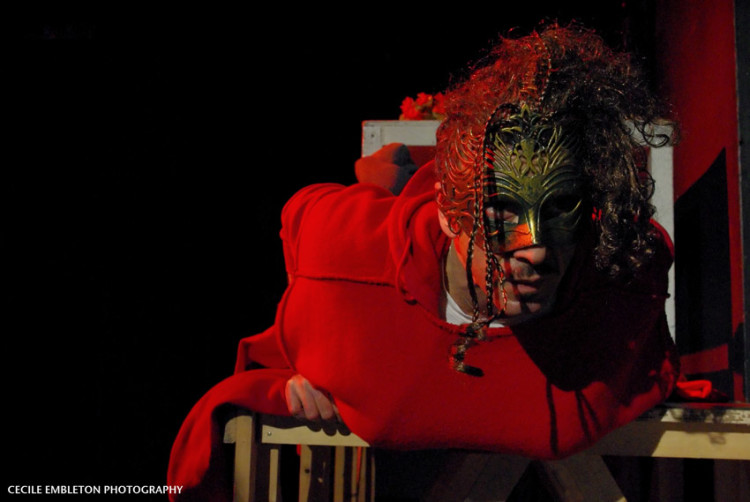
MENECMI
Directed by Memé Perlini
Teatro Vascello at Rome
From 9 to 27 march 2011
Via G. Carini 78, Roma – T. 06 5881021 – 06 5898031
www.teatrovascello.it – promozione@teatrovascello.it
Text by Roberta d’Errico
The performance get a start with open curtains where the geometric designs take different colours and shapes and fit together without a break. Such a jack in the box is the heart of the performance: the parting and the recomposition of the twin. Outstanding scenic elements contribute as a whole, with something like two similar structures stairs shaped placed on both side of the stage and two tea tables outside the proscenium, always placed on both side. Such elements break the timeless ambience where they have been introduced testifying the tangible everyday life. The stage is completed by a platform which could represent some different places and four thick threads that hang from the ceiling with a stick on the bottom of the stage to tie them. We do not know if they can be read as a spatial-temporal border between the performance and the audience or just to show in line with the fate. The Plautus’ text is performed faithfully. The director chooses to narrate his Menecmi through the costumes that distinguish every single character mixing the modern with the ancient. Then, Menecmo 1 and Menecmo 2, play-acted by Alkis Zanis, are dressed with T-shirt and gym shorts and as a distinguishing mark .they have on a white and a red helmet.
The prologue, that in the tradition of the ancient comedy fulfils a function of stating to the audience the background, is entrusted to the actor Massimo Fedele, who shows himself with a weird coloured wig, dressed in costume and with some objects which go back to the classic imagination in a kitsch way making the audience mind be in a goliardic mood at once. The same actor performs masterly the role of Cilindro (Cylinder), cook of Eozia (Gaia Benassi) the harlot with whom Menecmo 1 pleases himself all day long behind his wife’s back (Cristina Giachero).
Into Memé Perlini’s work the things have acting roles and speak a language sometime decipherable and sometime harder to decode. Other objects become rich of symbols, the lifeblood of the stage, able to create the complicity between the actor and his audience, able to detect the unexpected meaning of something put on stage: a strap could be the cloak that Menecmo 1gives to Eozia as a present and the cage always in the hands of Messenione (Alberto Caramel) servant of Menecmo 2, could be the symbol of his status. The structures stairs shaped, the tea tables and the platform become what it is more suited to the action, but giving to us, audience, the task of conceiving its use.
The fabric of the work cross-refers to the acting developed during the post-war period enhancing the power of the image, free of any conditioning about the relationship between the form and the substance, free of any trivial and general likelihood, to impose the power of sight beyond and together with the text and the playing of actor. Of such a vision, Memé Perlini has been one of the exponent during the years 1960 and 1970 and nowadays, coming back on stage, he proposes again those contents brought to life by the time and by the experiences elaborated into other artistic area, with a scenic consistency that renders the performance homogeneous and in the same time full of brio even in such a work where the circumstances are connected to its time.
Such a poetics is embodied in the Matron, character that the director dress of a black cloth matching it with a sunshade coloured lady’s hat, oriental contemporary import, and an eccentric umbrella with the same colours of the hat. The performance of such a character is related to the dress worn and thus wandering off Plautus view to say the least. It seems to be in conflict with the tradition the image that Perlini gives of the doctor (Maurizio Palladino) who comes on stage with only his briefs on, with some erotic semblance and uttering the lines in a way almost by rote, even his movements and the way he comes in or leaves the stage accompanied by syncopated music appear to be as a routine, transmitting on the other hand a passing exoticism, a distance between our time and that of the work and then, perhaps, getting us near to it.
A global approach beyond some interpretative limit comes out and seems to us never out of place but on the contrary it revives the text and the same characters.
In the final part of the work, in order to show the twins together, the director dresses up the actor who performed the twins and the actor who performed Spazzola and the doctor, with the same and fancy objects: eyeglass, nose and moustache.
The lights dim, they sing the song which we heard when the character of Eozia came on stage, a nice romantic song, composed by Gianni Fiori for this performance, speaking of love, love that is always true, even if it is transient and just for this reason it must be lived light-hearted. “To upset” the emotional and romantic state is the sudden switch on of both twin’s nose. It is as though the director had desired to share a touching moment and at the same time he had refused it.
After all, even the text of Plautus, into its unbridled humour that lasted for centuries, offer us, and shortly afterwards take away, some moments of sad reflections at the same time deep and modern like the considerations said by Messenione who thinks that he has been freed: ”please, master, dispose of me, order to me, like when I was your slave”.
Roberta d’Errico
Translated by Salvatore Rollo – at salvatore_rollo@fastwebnet.it
Position the cursor on the images to view captions, click on images to enlarge them.
Posizionare il cursore sulle immagini per leggere le didascalie; cliccare sulle immagini per ingrandirle.
MENECMI
Regia di Memè Perlini
Teatro Vascello di Roma dal 9 al 27 marzo 2011
Via G. Carini 78, Roma – T. 06 5881021 – 06 5898031
www.teatrovascello.it – promozione@teatrovascello.it
Testo di Roberta d’Errico
Lo spettacolo inizia a scena aperta dove segni geometrici, di diverso colore e forma, giocano un incastro senza soluzione. Questa scatola magica ha in sé il cuore dell’opera: la separazione e la ricomposizione del doppio. Concorrono elementi scenici più visibili come due identiche strutture a scale poste ai lati della scena e due tavolini uguali posizionati sempre ai lati, ma fuori dal boccascena. Questi elementi rompono, nella loro palpabile testimonianza del quotidiano, l’atmosfera atemporale in cui sono immessi. Completano la scena una piattaforma, che potrà rappresentare luoghi diversi, e quattro spessi fili che scendono dall’alto e sono fermati da un’asta ai piedi della scena che non sappiamo se vogliono segnare un confine temporale e spaziale tra l’opera e il pubblico o testimoniare le fila di un destino. Il testo segue fedelmente quello plautino. Il regista decide di raccontare il suo Menecmi attraverso i costumi che caratterizzano i singoli personaggi in una commistione di antico e moderno. E così Menecmo 1 e Menecmo 2 interpretati da Alkis Zanis sono vestiti con maglietta e pantaloncini sportivi e, come segno di distinzione, indossano il primo un casco bianco, il secondo un casco rosso.
Il prologo, che nella tradizione della commedia antica ha la funzione di spiegare agli spettatori l’antefatto, è affidato all’attore Massimo Fedele, che si presenta al pubblico con una eccentrica parrucca colorata, in costume e con oggetti che rivisitano in maniera kitch l’immaginario classico disponendo da subito lo spettatore ad un animo goliardico. Lo stesso attore interpreta in maniera magistrale il ruolo di Cilindro, cuoco di Erozia (Gaia Benassi) la prostituta con cui Menecmo 1 passa spesso le sue giornate di nascosto dalla moglie (Cristina Giachero).
Nella rivisitazione di Memè Perlini gli oggetti hanno un ruolo interpretativo e parlano una lingua a volte decifrabile altre volte di più difficile decodificazione. Altre oggettualità si arricchiscono di simbologie, linfa vitale del teatro, creando complicità tra attore e spettatore, nella scoperta dell’inatteso significato di una cosa portata in scena: una cinta può essere il mantello che Menecmo 1 regala ad Erozia e la gabbia che Messenione (Alberto Caramel), servo di Menecmo 2, porta sempre con sé, può simboleggiare la condizione sociale. Le strutture a scala, i tavolini e la piattaforma divengono ciò che risulta più confacente alle necessità dell’azione, lasciando a noi spettatori il compito di immaginarne l’uso.
Il tessuto dell’opera rimanda alle teorie teatrali, sviluppatesi nel dopoguerra, che esaltano la potenza dell’immagine, libera dal condizionamento di corrispondenza tra forma e contenuto, slegata da una banale o generica verosimiglianza, e impongono la potenza visiva oltre e insieme al testo e all’interpretazione attoriale. Di questa visione Memè Perlini è stato uno degli esponenti negli anni ’60 e ’70 e oggi, nel suo ritorno alle scene, ripropone quei contenuti vivificati dalla distanza del tempo e da esperienze svolte in altri ambiti artistici, con una coerenza scenica che rende la rappresentazione omogenea e allo stesso tempo piena di brio anche nel confronto con un’opera così legata alle circostanze del suo tempo.
Questa poetica è incarnata nel personaggio della Matrona che il regista fa vestire con un abito nero assortito con un cappellino parasole, colorato, di importazione contemporanea orientale, e un eccentrico ombrello con gli stessi colori del cappello. L’interpretazione di questo personaggio segue l’abito che indossa allontanandosi in questo caso non poco dalla visione plautina. Così come stridente con la tradizione appare l’immagine che Perlini dà del medico (Maurizio Palladino) che si presenta in scena vestito di soli slip dall’aspetto erotico e con un modo di pronunciare le battute quasi meccanico, così come meccanici sono i suoi movimenti e il modo di entrare e uscire dalla scena accompagnati da una musica altrettanto sincopata, comunicandoci, d’altro canto, un esotismo temporale, una distanza, tra il nostro tempo e quello dell’opera e quindi, forse, avvicinandoci ad essa.
Emerge chiaramente una complessiva impostazione interpretativa sopra le righe che non appare mai stonata, ma al contrario rigenera il testo e i personaggi stessi.
Nel finale dell’opera, per mostrare i due gemelli insieme il regista traveste l’attore che ha interpretato i due gemelli e l’attore che ha interpretato Spazzola e il dottore con oggetti uguali e stravaganti: occhiali, naso e baffi.
Le luci si abbassano, essi cantano la canzone che abbiamo già sentito per l’entrata in scena del personaggio di Erozia, una bella canzone romantica, composta per lo spettacolo da Gianni Fiori, che parla dell’amore, amore che è sempre vero, anche se fugace e per questo va vissuto spensieratamente. A “disturbare” lo stato emotivo sentimentale è l’improvviso illuminarsi del naso dei due gemelli. E’ come se il regista avesse voluto creare un momento di commozione, ma allo stesso tempo negarcelo.
E in fondo anche il testo plautino nel mare di una comicità così prorompente da resistere ai secoli, ci fa respirare, per poi immediatamente sottrarceli, momenti di riflessione dolorosamente profondi e moderni come quelli racchiusi nella considerazione di Messenione che crede di essere stato affrancato: “Ma, patrono mio, ti prego: disponi di me, comandami, come quando ero tuo schiavo”.
Roberta d’Errico
Theatre Editor

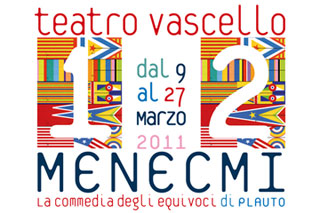

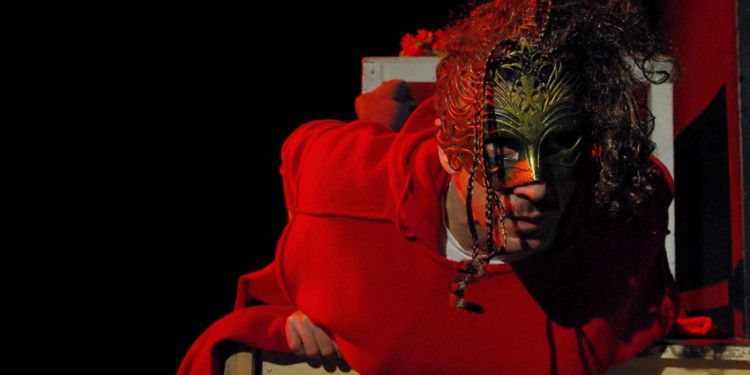
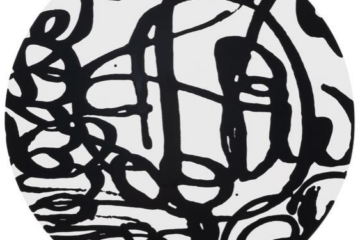
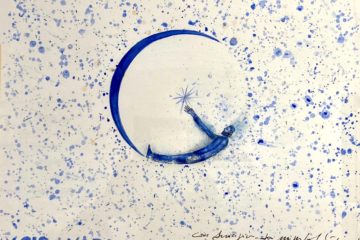

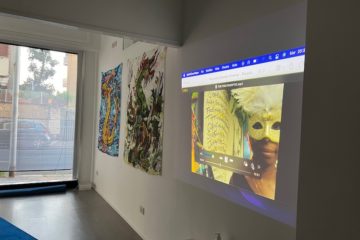

No Comment